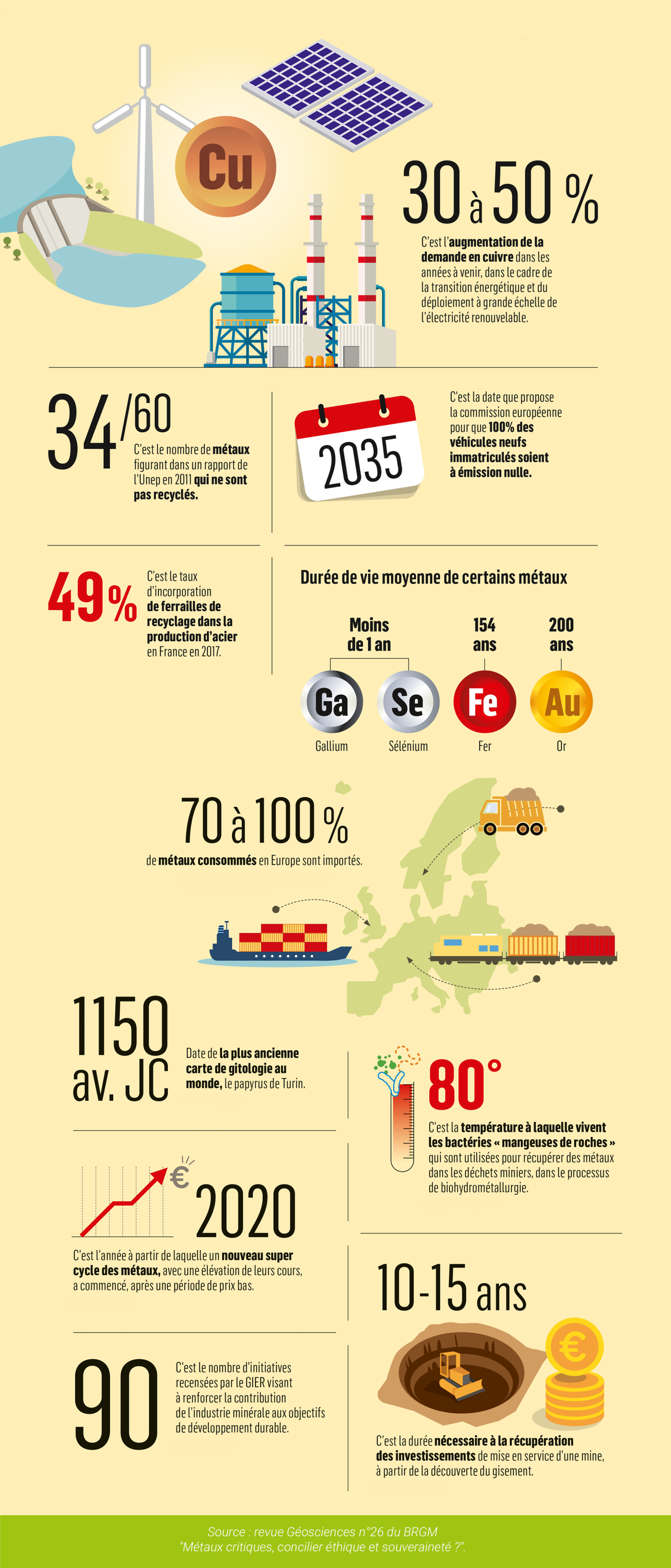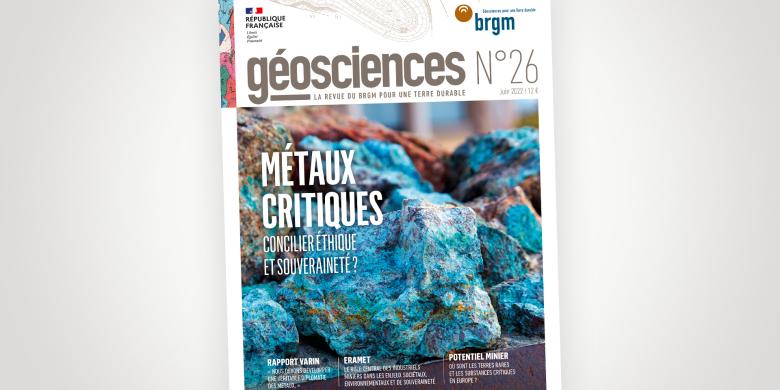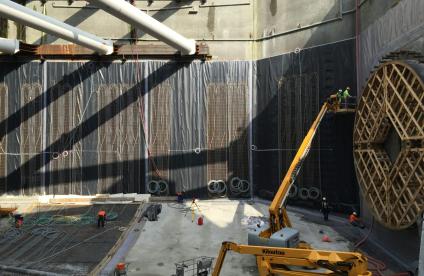
Infographic on mineral resources, taken from BRGM's Géosciences journal no. 26, entitled "Critical metals, can ethics and sovereignty be reconciled?"
© BRGM
Detailed description
30 to 50%, this is the estimated increase in demand for copper in the coming years, as part of the energy transition and the large-scale deployment of renewable electricity.
34/60, this is the number of metals that are not recycled, listed in a 2011 UNEP report.
2035, this is the date proposed by the European Commission for 100% of new vehicles to be carbon-emission free.
49%, this is the rate of incorporation of recycled scrap iron in steel production in France in 2017.
Average lifespan of some metals
- Less than 1 year : Gallium, Selenium
- 154 years : Iron
- 200 years : Gold
70 to 100% of metals consumed in Europe are imported.
1150 BC : Date of the oldest gitology map in the world, the Turin papyrus.
80°, this is the temperature at which the rock-eating bacteria used to recover metals from mine waste, live in the biohydrometallurgy process.
2020, this is the year in which a new metals super cycle, with rising prices, began after a period of low prices.
10-15 years, this is the period of time required to recover the investment to get a mine up and running from the time the deposit is discovered.
90, the number of initiatives identified by the UN's International Resource Panel (IRP) to strengthen the mineral industry's contribution to sustainable development objectives.
Geosciences no. 26: Critical metals, can ethics and sovereignty be reconciled?
Issue 26 of the Géosciences journal, published in June 2022, focuses on the topic of critical metals.
The energy transition towards carbon-free production reveals more than ever how dependant our technologies are on an increasing amount and variety of metals. Will we be able to meet all the needs for mineral raw materials in the coming decades? How can we secure our supplies given that the last mines in France closed at the end of the last century?
BRGM, France's leading public player in the field of mineral resources, has devoted this issue of its journal, Géosciences, to answering these questions and many others.
This issue, which includes an article by Philippe Varin, author of the recent report on securing the supply of mineral raw materials to industry, and an interview with Christel Bories, CEO of Eramet, discussing the place of metals in our daily lives, takes stock of European mining potential and reviews the state of recycling in France and the prospects for innovation in this field.








